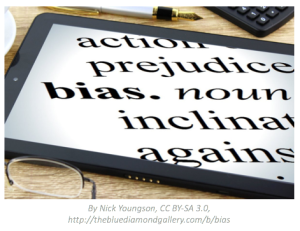Dismantling Weight Bias Towards Overweight Patients in Healthcare
Weight bias towards overweight patients is a prevalent form of discrimination present in healthcare today. These patients routinely receive unfair treatment, weight-focused diagnoses and shaming from healthcare providers. This causes psychological and physiological stress for the patients and a hesitant attitude toward accessing healthcare. The weight bias problem exists in almost every aspect of the healthcare system and is present in most countries.
This paper focuses on dissecting this issue in Ontario healthcare using the Systemic Design Toolkit. It starts by framing the system, followed by listening to the actors involved. Influences and root causes are investigated to understand the system. The paper then moves toward defining the desired future for the issue, followed by ideating solution spaces using leverage points. At the end, an innovative strategic solution model is proposed, and a transition roadmap is provided to demonstrate the implementation plan. Interviews, surveys and workshops are the primary methods of research used to investigate the issue.
Findings indicate the rampant presence of weight bias among family medicine practitioners in Ontario healthcare with sources of the issue rooting back to a societal fear of fatness. The ultimate desire for patients is revealed to be a better, more understanding relationship with their doctors, which can be achieved through diagnoses beyond high weight, treatments beyond weight loss, and an approach that looks beyond their body size. Four solution spaces are proposed and then narrowed down to provide the most meaningful and feasible path forward. A new collaborative solution model is presented with a ten-year roadmap that requires constant efforts and partnerships with different stakeholders in the system.

Weight bias, or stigma, is the unfair treatment of individuals based on their weight. Despite being highly pervasive in our society, very few efforts have been made to address it. This is in contrast to other forms of discrimination, such as those with regard to race, class, gender, and sexual orientation, which have the support of official laws and policies (Ramos Salas et al, 2017). Research and social policy on weight bias and discrimination lag far behind, to the point where negative attitudes based on weight have been labeled as the last acceptable form of discrimination (Brownnell et al, 2005, p. 1). In healthcare, weight bias exists commonly in the treatment of fat individuals. Fat individuals are labeled as overweight or obese, both identities given to patients using the Body Mass Index (BMI) tool. Moreover, those who are labeled as obese are presumed to be unhealthy with an increased risk of major diseases such as cardiovascular issues, diabetes, strokes, and cancer. However, BMI is a flawed measure of health, as many recent research studies are starting to indicate, so much so that the CDC (Center for Disease Control and Prevention) in the U.S. puts up this note on their web page, which contains information on obesity:
Test Your Understanding
At an individual level, BMI can be used as a screening tool but is not diagnostic of the body fatness or the health of an individual. A trained healthcare provider should perform appropriate health assessments in order to evaluate an individual’s health status and risks. If you have questions about your BMI, talk with your healthcare provider. (Center of Disease Control and Prevention, 2020)

Nick Trefethen, Professor of Numerical Analysis at the University of Oxford, summarized many of the limitations of BMI in an opinion piece he wrote, stating that “the body-mass index that we count on to assess obesity is a bizarre measure. We live in a three-dimensional world, yet the BMI is defined as weight divided by height squared. It was invented in the 1840s, before calculators, when a formula had to be very simple to be usable” (Carey, 2019). Not only that, the BMI was developed to measure the body of a Caucasian man. It is a health metric resulting from decades of research mostly conducted on Caucasian people (Firger, 2017). Therefore, it is not an accurate measure of health for people of other ethnicities and races.
Despite this research, the use of BMI and the resulting overweight or obese diagnoses from health practitioners result in the biased care of millions of fat people. Weight bias presents itself in various forms within a healthcare setting. Biased providers, including doctors, specialists, nurses, and staff, reveal their judgemental attitudes (Fruh et al, 2016). Diagnoses for the same diseases differ between thin and fat patients, where the latter are almost always ordered to lose weight as the treatment. The effects of this stigma result in these patients feeling alienated and humiliated. They are prone to being at risk for low self-esteem, depression, and lower quality of life (Phelan et al, 2015). Many leave the doctor’s office feeling like a failure and blaming themselves for their poor health, even if they pursue healthy choices. This results in high levels of stress hormones that have several long-term physiological health effects, including heart disease, stroke, and anxiety (Phelan et al, 2015). Ironically enough, obesity is considered a risk factor for these illnesses.

Perhaps one of the most concerning negative consequences of weight bias for fat patients is their avoidance of accessing healthcare, especially preventative healthcare, due to their being embarrassed by their weight (Phelan et al, 2015). Studies have documented a decrease in the use of healthcare services associated with an increasing body mass index. This includes reduced rates of routine breast and gynecological cancer screening tests among overweight individuals when compared to individuals whose body mass index is classified as normal (Alberga et al, 2019). In fact, the avoidance of preventive healthcare by fat individuals is what possibly contributes to the increased overall health risks linked to obesity, as expressed by the medical community (Brownell, 2005, p. 4).

With so many repercussions at play, including increased mortality risks, the stakes are high. Reducing weight bias in healthcare is crucial to the well-being of millions of patients. The dichotomy of all fat patients leading unhealthy lives and all thin patients leading healthy lives is an antiquated form of thinking that should be eliminated. This requirement for a weight bias reduction strategy led to the research question that this project seeks to answer: How might we reduce weight bias and improve healthcare for overweight patients?
However, following a review of the literature and how past interventions differed in the United States and Canada, it was determined that the strategy and tactics cannot be universal. Consideration of the differences in the governance process, health insurance model, and the sheer scale of the problem cannot be managed in the scope of one study. Therefore, the practical decision of narrowing the scope and focusing on the province of Ontario was made, leading to the primary research question being:
Pause to Reflect

Discussion Question: What attitudes towards “obesity” does a doctor need to demonstrate in order to convey to patients that their coping strategies are not being judged?
Read the following Project Description:
This project aims to propose a solution model and roadmap that can be viewed as a starting point for active efforts in Ontario.
In the current weight bias research landscape, few intervention strategies have been proposed to foster change. Researchers agree that any further research in the field should involve individuals living with obesity in all aspects of the research process, including design, methods and knowledge dissemination (Alberga et al, 2016). This paradigm was closely followed in this research study through the types of primary research conducted, which will be revealed in the next sections.
Another prominent tactic that researchers have proposed is sensitivity training for healthcare providers, including existing professionals and current students (Alberga et al, 2016). An example of this tactic is the Balanced View program based in British Columbia. It is an evidence- informed resource designed to reduce weight bias and stigma among medical professionals, mental health professionals, allied health professionals and public health professionals across the province (Balanced View, 2015). Multi-faceted and collaborative approaches have also been recommended for reducing weight bias. Researchers insist that the government, private sector and others need to work together to fund and provide more rigorous solutions (MacLean et al, 2009).
Nationally, there has been minimum progress made. The 2020 Canadian Obesity guidelines have taken a new direction and have called for a shift in focus to the root causes of obesity rather than weight loss alone. That means doctors working with patients are asked to understand the context that underlies the issue, which could include genetics, trauma and mental health issues. The advice by Obesity Canada and the Canadian Association of Bariatric Physicians and Surgeons also pushes healthcare providers to recognize any bias they may have against overweight patients — such as assuming they lack willpower or are non-compliant (The Canadian Press, 2020).
Currently, in Ontario, there are no active interventions implemented; however, some dialogue exists. In 2019, at the Ontario Public Health Convention, a panel discussion was held to discuss the role of public health in addressing weight bias and how to promote healthy lifestyles without stigmatizing the overweight population. Toronto Public Health was one of the panelists participating in this talk. Their intervention proposition included approaches such as ensuring all public health messaging or images used in resources and communications should focus on health and well-being instead of weight. They should acknowledge the role of individual and social determinants of health. They should be inclusive of all shapes and sizes and not exacerbate negative stereotypes of individuals with obesity (Hambleton & McColl, 2019).
While there are plenty of strategies proposed, with some progress being made; there is no explicit action being taken on a daily basis. The unfortunate emergence of the COVID-19 pandemic further introduced a plethora of issues to the Ontario healthcare system, pushing the goal for tackling weight bias to the backburner.
However, complications from weight bias have not paused. Obesity rates continue to rise, along with biased care for fat patients. Clearly, the current protocols of treating fat patients are not working; otherwise, we would have seen positive change through statistics and qualitative patient-centric research.
The pandemic will end, albeit with lasting effects and changes, and we need to be prepared to put healthcare weight bias reduction back on the high priority list.
This project will aim to have that game plan ready.
How might we reduce weight bias and improve healthcare for overweight patients in Ontario?
Sub-questions to consider:
- What can the patients, physicians, healthcare institutions, and policy-makers do to make weight bias reduction possible?
- What forms of interventions have already been proposed? What are the results of these interventions? Have they been successful?
- How biased are the current healthcare providers in Ontario?
- What is the current diagnosis process and treatment experience for overweight patients in Ontario?
- How are patients currently handling weight bias in their healthcare journey? What strategies do they use?
Writing
Here’s one set of steps to find a thesis statement/ ideas for body paragraphs:
- Skim through an article you’re interested in to get a sense of the ideas in this ongoing cultural debate.
- Take a position in the debate.
- Extract 2-3 sentence quotes from the article as examples of that idea
This is a small-group activity meant to help students develop the skill of writing topic sentences for body paragraphs.
Imagine that your thesis statement is:
The “obese identity” is formed in response to conflicting social discussions.
Or: Obese individuals are denied personal autonomy by discussions of their bodies as a social problem.
Or: Obese individuals are denied bodily freedom and agency in conversations about “the obesity epidemic.”
With your small group, identify a topic sentence for the body paragraph that will contain an analysis of the quote from the article “Body Weight, Clash of Ideologies” By James Hamblin The Atlantic.com 16 Jan. 2015. What is the one way this quote proves the thesis statement is true?
Group 1
“[B]laming obesity on poor personal decisions is an extremely reductionist approach. It’s at many levels misleading and has proven time and again to be ineffective if not counterproductive. Yet still, according to a presentation by Berkeley researchers, the most common ‘solution’ that most people propose for obesity is personal behavior change.”
Group 2
The obesity crisis “has been fueled by an extremely complex and dynamic set of circumstances, in schools and offices, in community planning, in media and technology, in food development, packaging, and marketing. And these factors can’t be divorced from the individual choices they inform, consciously and otherwise.”
Group 3
“Only 18 percent of Americans identify external factors (like the ubiquity of junk food, lack of opportunities and places for kids to play, et cetera) as the primary causes of childhood obesity. Most people, Colleen Barry and colleagues reported recently in the New England Journal of Medicine, blame things like ‘overeating,’ ‘lack of exercise,’ and ‘watching too much television.’ Blaming those things is not wholly wrong, just indicative of an incomplete understanding of the problem. These things are better regarded as symptoms than causes.”
According to this, the areas that need to be targeted for the obesity epidemic are not the one’s being viewed by society as a whole, just the side effects of it. Even though these external factors play a part, they are not the main cause as many people assume. This prevents people from talking about the real problems with obesity in society as they often do not have as much input because these other reasons pop up as more important.
Group 4
“Anthony Downs described a life cycle for social problems, and it’s one to which obesity seems susceptible. Initially people care a lot, but the sense of urgency fades when the need for public sacrifice and displacement of powerful societal interests becomes evident. (‘I strongly agree that you should feed your kids less and exercise them more, but I also strongly disagree that I should pay to build public parks and create safer neighborhoods, or compromise my access to giant, giant sodas.’)”
Group 5
“[I]n a story about obesity, an article will include a photo of an overweight person devoid of head. Typically the person is in an unflattering position, incompletely clothed or in clothes that are too small, and often doing something unhealthy. An optimistic explanation might be that outlets are trying to illustrate obesity using stock photos without identifying a single person—it’s not an overt attempt to dehumanize, though it does come off that way. But Yale University’s Rudd Center for Food Policy and Obesity recently found that 72 percent of news stories on the websites of CBS, ABC, MSNBC, FOX, and CNN depicted overweight people in a ‘negative and stigmatizing manner.’”
Group 6
“There are better ways to illustrate obesity…It’s these subtle messages that slowly build a public perception that influence policy. The Rudd Center, among others, has an open-access database of photos of overweight and obese people intended to minimize stigma. The images show people not languishing on couches, but out walking in parks and at grocery stores choosing judiciously among the produce. The people look happy and real, as people are. They are neither victims nor offenders. They make good decisions and bad, as all people do, in every case inseparable from the context in which those decisions are made.”
Answers:
Below are possible topic sentences for each of the above potential paragraphs. How did I write these? In coming up with topic sentences, you only need to answer these two questions:
- What is the general topic of the paragraph?
- What is the paragraph saying about that topic?
This method of writing topic sentences should help you get past the feeling of being stuck when trying to conceive of one out of thin air.
Group 1
Topic sentence: Obese individuals find themselves the objects of public scrutiny, which is a form of oppression.
Group 2
Topic sentence: One important issue for obese individuals is that they are blamed for their choices so that their bodies are seen as symptoms of personal failure instead of the consequence of social structures.
Group 3
Topic sentence: There are often social misconceptions about how people become obese, stereotypes that oversimplify the issue.
Group 4
Topic sentence: People who are obese face problems when being part of a society and with society’s perspective towards them, which leads to them living a more judgmental lifestyle.
Group 5
Topic sentence: The dehumanization of obese bodies is a contrvesial topic in social discussions.
Group 6
Topic sentence: One way “obese” individuals can regain their personal autonomy is through humanizing, respectful, neutral depictions in the media.
Now that we’ve looked at how to write thesis statements, choose quotes, and write critical reactions and topic sentences, it’s time to look at how to write conclusion paragraphs. A conclusion paragraph is not simply the last paragraph in your paper: it’s where you “draw conclusions,” or look from a slight distance at what you have done in your argument. You should not be continuing to argue your point but rather standing back and connecting your thesis to broader implications in the real world.
To start, choose a couple of sentence starters and finish them relative to your argument:
- This debate/conversation is important because…
- The most important part of this issue is…
- What needs to be done to solve the problem is…
- If it’s true that THESIS, then…
- If nothing is done to resolve this problem…
- This debate forces society to consider…
Here’s an example of a conclusion using these sentence starters:
If nothing is done to solve the problem of Noom being the same old diet plan instead of a true wellness program, then the company will continue to profit off of deceiving their customer. The debate on this issue has forced society to consider whether Noom and other apparently evolved wellness platforms are worth the money.
The most important part of this conversation is that individuals’ health is more important and more impactful than a single wellness platform can account for.
What needs to be done is that apps such as Noom should be held more accountable for its claims to enrich and improve people’s lives. No corporation has any business taking customers’ money and denying them the life-changing and life-saving health strategies they promise.
Note that the final sentence of your conclusion sentence should not be simply another sentence like the previous ones but rather one that you tinker with stylistically so that it lands heavily and definitely like a “mic drop” moment.
Media Attributions
- image1-7 © Nick Youngson via. The Blue Diamond Gallery is licensed under a CC BY-SA (Attribution ShareAlike) license
- Game pieces © Unsplash is licensed under a CC0 (Creative Commons Zero) license

